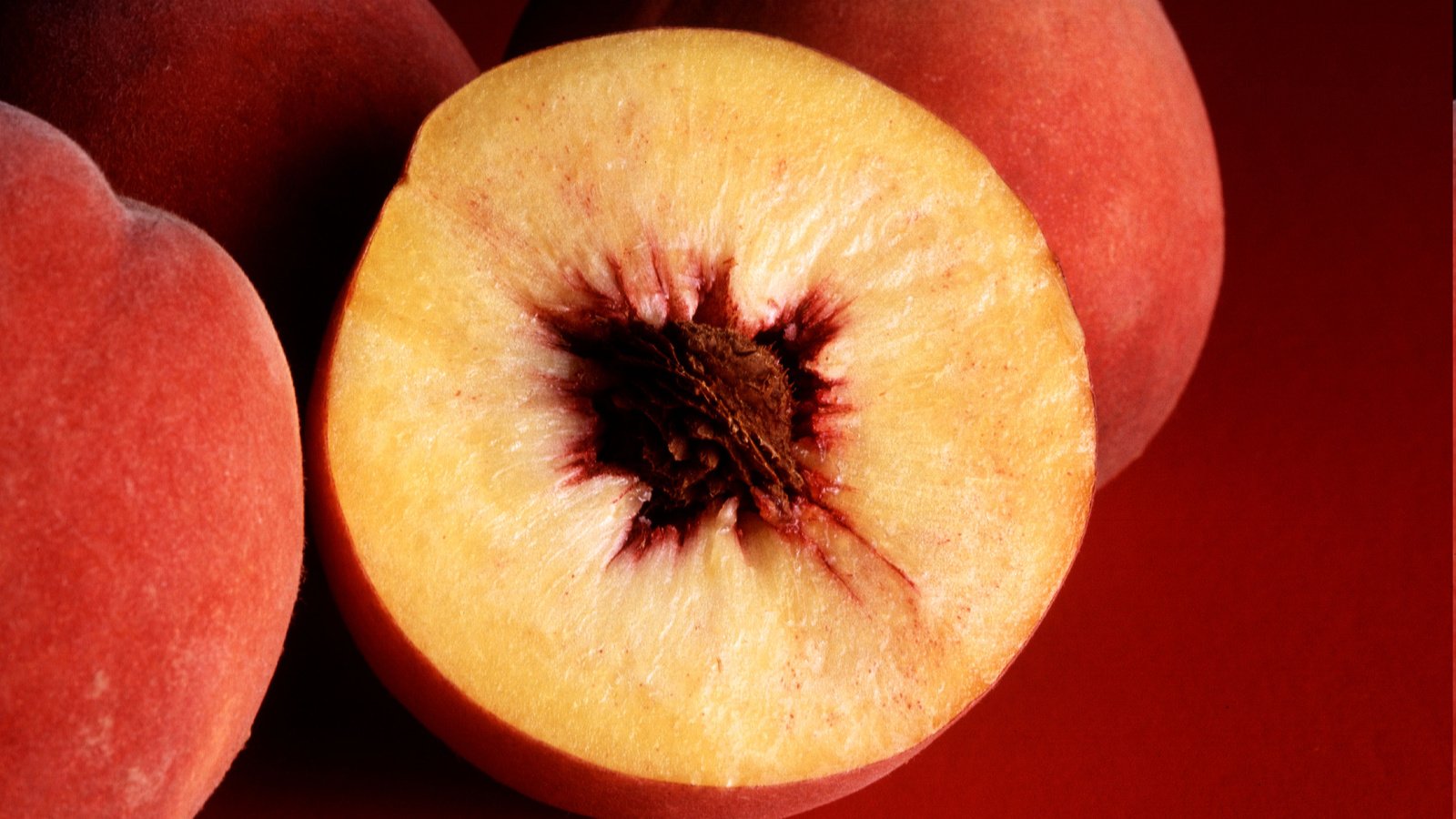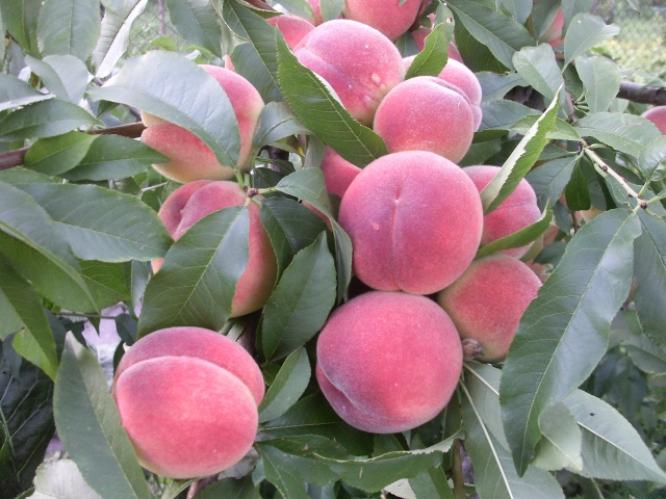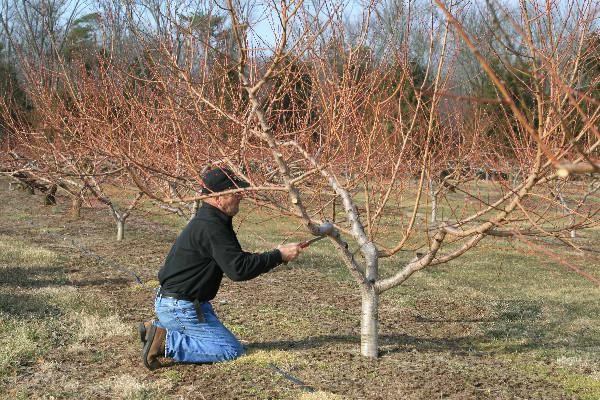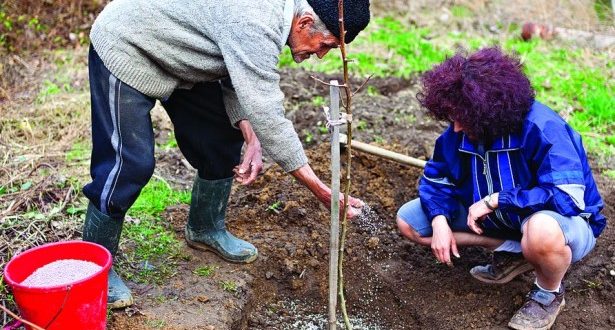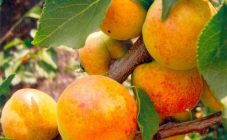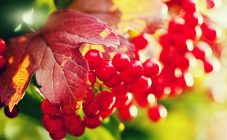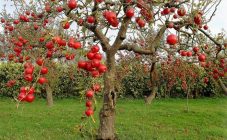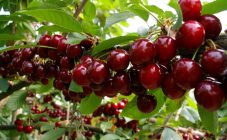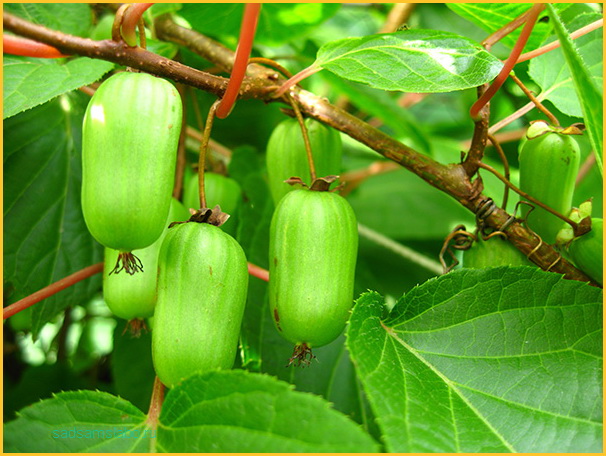Content:
Today peaches are among the favorite fruits of adults and children. They have earned popularity thanks to their unique taste and aroma.
Russian gardeners and summer residents rarely plant this plant in the garden, considering it unsuitable for the local conditions. But in fact, if you know the nuances of care, planting and growing, you can enjoy the fruits of the tree every summer on your site.
Description of culture
Peach belongs to the Pink family. It comes from China, got to Europe through Persia (Iran), where it got its name.
The life span of a tree is 20-35 years.
Wood appearance
It is a short, upright tree with a wide crown. The bark is scaly. Growth boosts from 0.3 to 8 m, depending on the variety. Old branches are drooping, rough, young ones are thin, smooth.
The leaves are long (up to 18 cm), narrowed at the end, dark green in color. Bare, shiny surface.
Flowering and fruits
Fruits are spherical, color varies from green-white to yellow-orange, depending on the variety. Inside the bone, wrinkled structure. It separates easily from the pulp. The fruit is sweet with a subtle sourness.
Popular varieties
An abundance of 5000 varieties are especially popular:
- Golden Moscow is a ripe variety. Appeared on the market recently, but is very popular due to its high winter hardiness and disease resistance. Juicy, glossy fruits.
- Siberian. Prized for its portability. Yellow fruits are stored in the refrigerator for 4 weeks. The first crop is harvested in August, the second in early September.
- Morettini. It has a high winter hardiness, the fruits ripen the very first, but have an average transportability.
- The veteran is a favorite for taste. Fruits no more than 150 g. Suitable for conservation.
- Inka is a self-pollinated variety. Produces a good yield when planted alone. The fruits are large (240 g).
- Harnas. Fruits grow on a vigorous tree that bears fruit constantly. The variety is unpretentious, withstands severe frosts.
Landing features
For planting a pit take 1 or 2 year old seedlings. The bark should be smooth and uniform. The seedlings are best suited for spring planting in late March - early April. The soil should warm up to at least 12 degrees Celsius.
The landing pit is prepared in 5 months. On average, the diameter and depth of the pit should be 0.5 m. A peg is placed in the center, 1 m deep, to tie up a tree.
Any soil is suitable for landing. The main thing is that it allows air and moisture to pass through well, except for saline and acidified ones. Fertilize heavy soils with 2 buckets of humus, 1 bucket of compost.
A 5-6 cm shaft is formed around the planted seedling, filled with 1-2 buckets of water.
Culture care
Watering
The first 2-3 years are watered 2 times a month with 20 liters of water.In the fourth year, late-ripening fruits are watered 6 times, and early-ripening - 2-3 times. 20-50 liters are poured under one tree for watering. The soil should be soaked to a depth of about 0.6 m. For the fruits to be larger, the tree is watered 20-30 days before harvesting.
How to feed a peach
The first feeding is carried out before flowering in the budding phase. For this, mineral fertilizers are used: urea, nitroammofosk, nitrophosphate. For each tree, 30-40 g.
Top dressing of peaches in summer
Experienced gardeners feed the tree in the summer season with compound fertilizer using a foliar method. The nutritional mixture is composed of the following ingredients:
- 1 bucket of water
- 30 gr. urea.
- 150 gr. extracts of super sulfate.
- 10 gr. borax.
- 15 gr. manganese.
How to spray a peach
In spring time, it should be sprayed with 7% urea solution. This drug will strengthen the plant's immunity, kill and protect against pests. Spraying should be carried out no more than 2 times per season.
How to care for a peach in the fall
At this time of the year, the culture requires more maintenance. The soil should be slightly loosened. You need to water before the onset of frost. Before insulation, the tree is treated with lime.
Soil care
For 3 years of life in the summer, you need to plow the land, fertilize the soil with humus, peat.
Subsequent years, soil maintenance should be done every 3-5 years.
Bark formation and annual pruning
They begin to form a culture the next year in March-April after planting before the start of sap flow and flowering. The time frame is 20 days. All side shoots are cut to 50 cm.
Above the die, 6 shoots are left to form skeletal branches. Above the branches, the central trunk is removed. The remaining branches are cut into a ring.
The second order is formed next year. Shoots that arise on skeletal branches are called fruiting. They are left 20 cm, and the rest are cut off with a ring.
In summer and autumn, peach care consists in constant cleaning of old, decaying parts of the tree.
Preparation for wintering
Most varieties do not tolerate severe frosts (30 degrees Celsius), so they should be covered. Near the trunk, 2 stakes are driven under the height of the tree trunk. Stakes and boles are wrapped with a sugar bag or a cardboard box. The structure is wrapped in cling film.
If the winter in the region is warm, you can spud the bole to a height of 0.5 m. The surface of the trunk circle is covered with humus, peat, 10-15 cm thick.
Diseases
Curly leaves
Appears in the autumn due to high soil moisture. Red swellings form on the surface of the leaves, a white bloom appears on the seamy side. Then the foliage turns brown and crumbles.
Powdery mildew
This is a fungal disease associated with a high nitrogen content. On the front side, a formation appears in the form of a white bloom, which gradually grows. During growth, sections of the tree die off.
Moniliosis
Treatment instructions:
- The infected areas are removed.
- All fallen leaves, stems are removed.
- Watering is temporarily stopped if the soil is waterlogged.
- They are treated with pharmaceutical preparations: fungicides, colloidal sulfur solution, trichodermine.
Pests
The following pests live on the peach tree.
Shield
Appear at the time of fruit ripening. All parts of the peach are affected with red spots.They drain the plant. As a result of their activity, parts of the tree die off, the fruits do not grow.
Striped moth
They bite into the leaves, eating away the middle, can damage the stalks and shoots.
How to treat a peach from pests
Before treatment, the infected shoots are cut and destroyed. Peach processing is carried out with Aktar, Inta-vir, Chlorofos 2 times with a break of 3 days.
The consequences of improper care
Inadequate grooming of the peach tree results in:
- A sharp drop in yield, fruit quality.
- The immunity of the tree weakens, which contributes to the appearance of diseases and pests.
- The plant often dies, begins to rot, does not survive the winter.
Growing a peach tree is not easy. It requires a lot of care and attention. But if the owner of the garden can do everything correctly, following the rules and advice, then at a certain time he will receive a bountiful tasty harvest.
